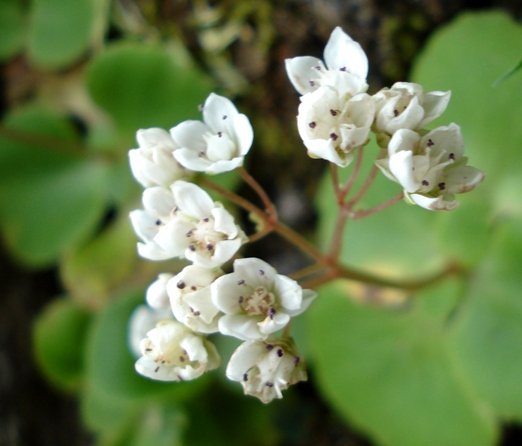Crassula capensis diverging styles

Author: Ivan Lätti
Photographer: Judd Kirkel Welwitch
These Crassula capensis flowers display a little of the Crassula genus feature of being apocarpous, i.e. the different carpels or female flower units being separate. Syncarpous flowers, as for instance those of Hibiscus, have their carpels joined.
Five diverging white styles on bulging ovaries are visible in the flower centres in the photo, in varying stages of development. Black anthers spread around them inside the pointed petal bowl. A complete flower, such as a Crassula flower, consists of four concentric whorls: sepals, petals, stamens and carpels.
From outside to inside these flower components represent in sequence: a protective cover often in green, an attractive invitation in all colours thinkable, the male flower parts and the female flower parts. The complete flower is thus hermaphroditic or bisexual, but at least covering it all up in clothing, within the calyx (outer garment) and the corolla (upper rather than inner garment).
Remember to check next time when C. capensis flowers are spotted, whether the number of inside flower parts all increase in accordance with the petal count when the flower produces more than five petals (Manning, 2007; Stoneman, 1928; iNaturalist; Wikipedia).

